Salem U.S.O.
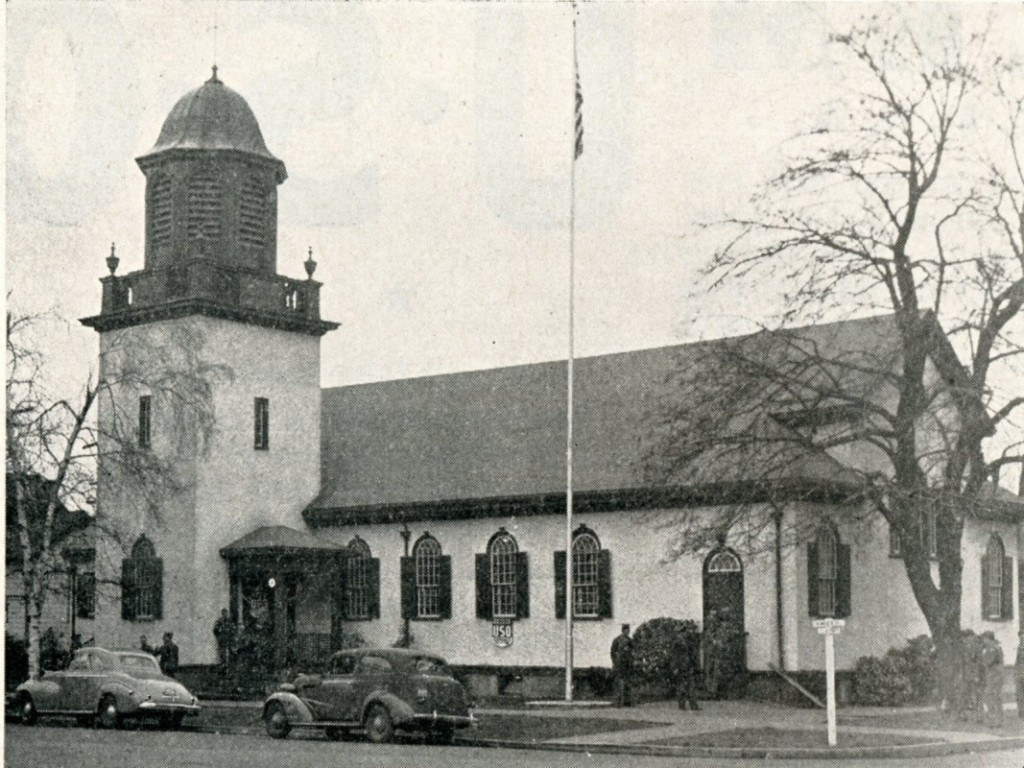
One of Salem’s USO buildings. Look familiar? It is now the offices for Sherman, Sherman, Johnnie & Hoyt, LLP, on the NW corner of Chemeketa and Cottage Streets. The building previously had served as a church building. Photo Source: Oregon Magazine, October 1944. WHC 2008.038.0221.
Salem During WWII
Salem was clearly not on the front lines of the global conflict. Nonetheless, as the largest city in the Mid-Willamette Valley,[1] it found itself as a cultural hub for service personal posted locally and passing through. Day-passes and weekend night life drew scads of servicemen (and women) to Salem from the 57,000+ acre cantonment at Camp Adair outside of Corvallis, the Salem Airbase (located at what is now the Salem Airport) and temporary quarters of several groups hosted at the Oregon State Fairgrounds. [2] (Quick aside: did you know that first squadron to fly P-51 Mustangs in the European Theater trained at the Salem Airbase for a time?!). [3]
Salem Joins the U.S.O. Movement
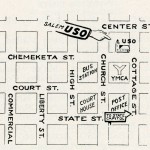
Map of one of the Salem U.S.O. Clubs in Salem, Oregon. Published in the Oregon Magazine, October 1944, WHC 2008.038.0221
To provide services and support to this influx of military personnel, Salem joined the national United Service Organization (or USO) movement to provide GI’s with a “Home away from Home”. Most of us probably associate the USO with big name celebrities entertaining troops overseas or at swanky clubs in Hollywood. In fact, there were over 3000 USO clubs across the country at the height of WWII providing places where “the service man can write letters, take a shave, press his clothes, play games, meet his friends, get a snack to eat, enjoy a dance.”[4] By 1944, Salem had two USO clubs– one operated under the auspices of the YMCA on Chemeketa Street and the other the Salvation Army on Court Street.[5]
During the 1940s, Salem was a city of just over 30,000.[6] Contemporary papers reported that 25,000 soldiers patronized the Salem USO club each month.[7] This huge surge of people, especially on weekends, led to a real housing crisis. One of the biggest programs operated by the Salem USO was run by the “Sleeping Quarters Committee,” which coordinated three makeshift dormitories for visiting service men near the USO club.[8] 250-500 men could find a cot for the night at the St Joseph’s Catholic Hall or the YMCA gymnasium. The Home Hospitality committee also found homestays and hot dinners[9] with Salem families for service personnel on weekends and over holidays.[10]
U.S.O. Services
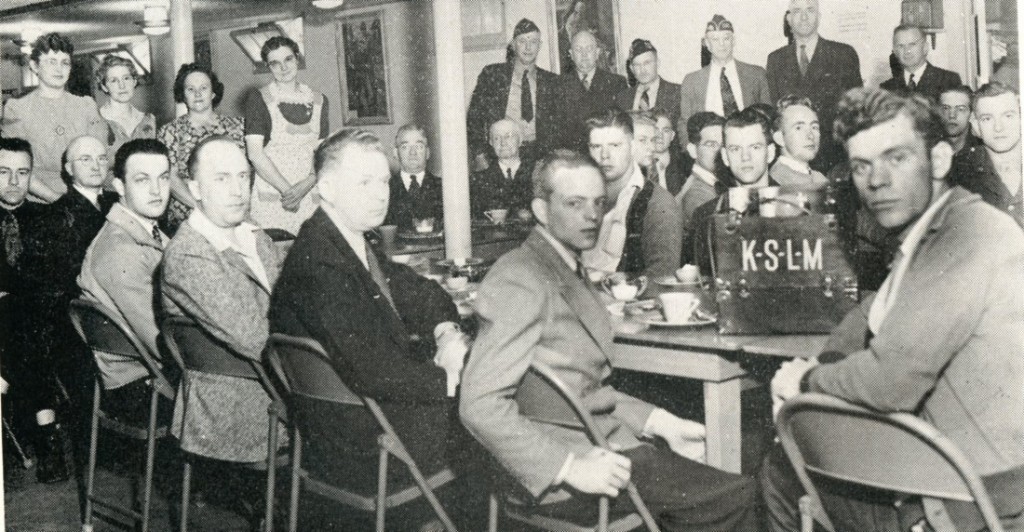
New Recruits Breakfast. Published in the Oregon Magazine, October 1944, WHC 2008.038.0221
Food was a big part of the USO model. The snack canteen, staffed by 500 volunteers a month (including governor’s wives)[11], served a variety of treats donated by people in and around Salem. The USO also hosted new recruit breakfasts, treating local inductees to ham and eggs with party favors including “a Bible, candy, cigarettes, writing paper, and booklets on ‘how to get along in the Army.'”[12] Dancing, too, was important. In addition to regular weekend dances at the club, 250-300 members of the local chapter of the Girls Service Organization (or GSO) were bused twice-weekly to Camp Adair (with chaperones) to act as hostesses for parties and dances. “Many romances have developed,” one editor opined, “and after the war many a soldier, marine or sailor will return to see the girl he left behind.”[13]
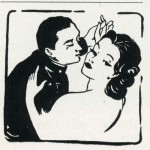
Illustration from U.S.O. Number of the Oregon Magazine. Published in the Oregon Magazine, October 1944, WHC 2008.038.0221
Reports were unapologetic about the amount of drinking that occurred on these weekends, describing in detail the “Tank Room” where “many a G.I. celebrating too much pay day, was put to bed between clean sheets and well taken care of, no matter how much under the weather…attendants were always on duty all night to take care of men and check on fire hazards.”
There were many opportunities for entertainment and leisure. The YMCA opened its gym facilities for swimming and exercising. There was a fully stocked library and a billiards room. One faithful volunteer even offered her palm reading services. Educational trips were offered on Sunday afternoons and included tours of the State Penitentiary, Lee Eyerly’s Arabian horse ranch, the State Hospital and large canning facilities. Maybe the most bizarre trips hosted by the USO were what can only be described as a Salem-based celebrity tours. They featured places associated with Salem’s most famous residents and included stops at the childhood home of Charles McNary (then candidate for Vice President with Wendell Willkie), an office building Herbert Hoover worked in, the college of Rear Admiral Ross McIntyre (President Roosevelt’s personal physician) and the home of Admiral Thomas Gatch (naval hero).[14]
There were a lot of practical matters attended to by the volunteers at the USO as well. The Button Brigade brought volunteers in from
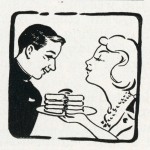
Illustration from U.S.O. Number of the Oregon Magazine. One of Salem’s USO buildings. Look familiar? It is now the offices for Sherman, Sherman, Johnnie & Hoyt, LLP, on the NW corner of Chemeketa and Cottage Streets. The building previously had served as a church building. Photo Source: Oregon Magazine, October 1944. WHC 2008.038.0221.
the community to help sew on buttons, badges and stripes or take care of repairs and alterations. There was also an entire department set up to provide housing and employment services for soldier’s wives and families. They worked long hours, keeping card files of available apartments or rooms for rent, and even helping meet people at the train or locate family members. [15] The USO also provided nearly 16,000 envelopes and cards per month for folks write home from their “home way from home.”[16]
Portions of this article were printed in the Statesman Journal, Sunday, July 29, 2018. This article is reproduced here with additional information and citations for reference purposes.
Citations
[1] In 1940, Salem boasted a population of 30,908. Compared to the population of Eugene (20,838) and Corvallis (8,392), Salem was the largest city in the Mid-Willamette Valley. See Oregon Population by Cities 1850-2008, Willamette Heritage Center, X2011.001.0100.
[2] Numerous groups were even stationed at varying times at the Oregon State Fairgrounds, including the 104th Cavalry regiment. WWII Armed Forces. http://www.niehorster.org/013_usa/40_org/cav/cav_hm-rgt.html lists the cavalry was there November 1943-January 1944. Corroborated by photographs 2007.001.1148; 1998.012.0003; 1998.012.0084. In addition to the cavalry, other groups appear to have been at the fairgrounds. See not in “Weekend Crowded with Activities.” Capital Journal, 21 Aug 1943, page 5 that reads “members of the army orchestra stationed at the fairgrounds will play…”
[3] Oregon Statesman. 16 Aug 1944, pg 9. See also Magee, Margaret. “Salem Airbase Training Spot for High-Rating Squadron.” Capital Journal. 17 Jan 1946, pg 3.
[4] “USO’s Birthday” Oregon Statesman 4 Feb 1944, page 4.
[5] “USO’s Birthday” Oregon Statesman 4 Feb 1944, page 4.
[6] “Oregon Population by Cities.” Compiled records. X 2011.001.0100.
[7] “25,000 Soldiers Patronize Salem USO Every Month.” Capital Journal, 15 Oct 1943, pg 10. See also Oregon Magazine, October 1944 – USO number, which claims 503,673 individuals served over a two year period, which pencils out to about 21,000 per month.
[8] “Salem Oregon, USA. U.S.O.” Oregon Magazine. Salem: October 1944, WHC 2008.038.0221
[9] 25,000 Soldiers Patronize Salem USO Every Month.” Capital Journal. 15 October 1943
[10] Salem Oregon, USA. U.S.O.” Oregon Magazine. Salem: October 1944, WHC 2008.038.0221, pg 14
[11] 25,000 Soldiers Patronize Salem USO Every Month.” Capital Journal. 15 October 1943
[12] “Salem Oregon, U.S.A. – U.S.O.” Oregon Magazine, October, 1944.
[13] Salem Oregon, USA. U.S.O.” Oregon Magazine. Salem: October 1944, WHC 2008.038.0221, 10.
[14] “Salem, Oregon, U.S.A. – U.S.O.” Oregon Magazine, October 1944, pg 25.
[15] Salem Oregon, USA. U.S.O.” Oregon Magazine. Salem: October 1944, WHC 2008.038.0221, pg 8.
[16] “25,000 Soldiers Patronize Salem USO Every Month.” Capital Journal. 15 October 1943



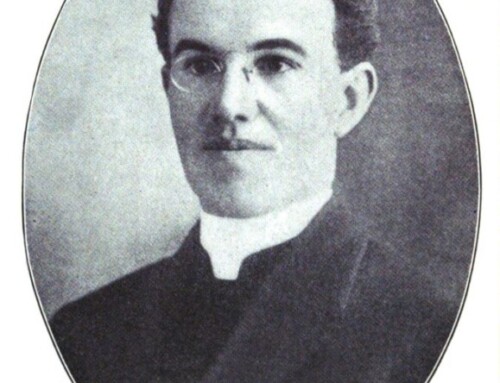
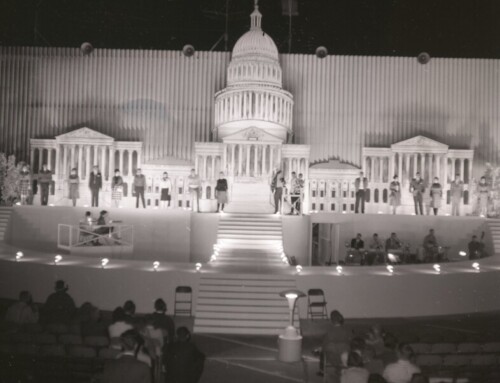
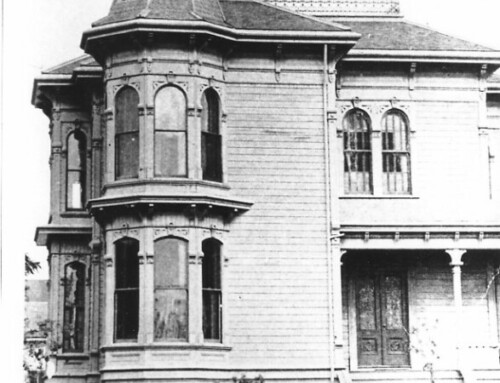
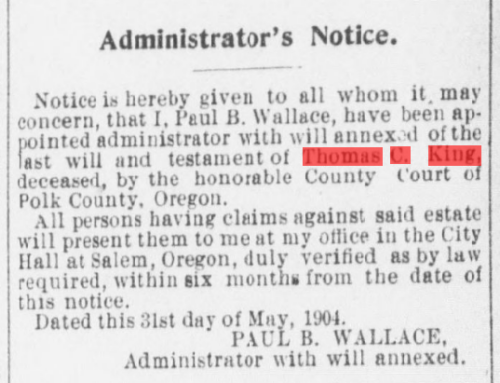
Leave A Comment